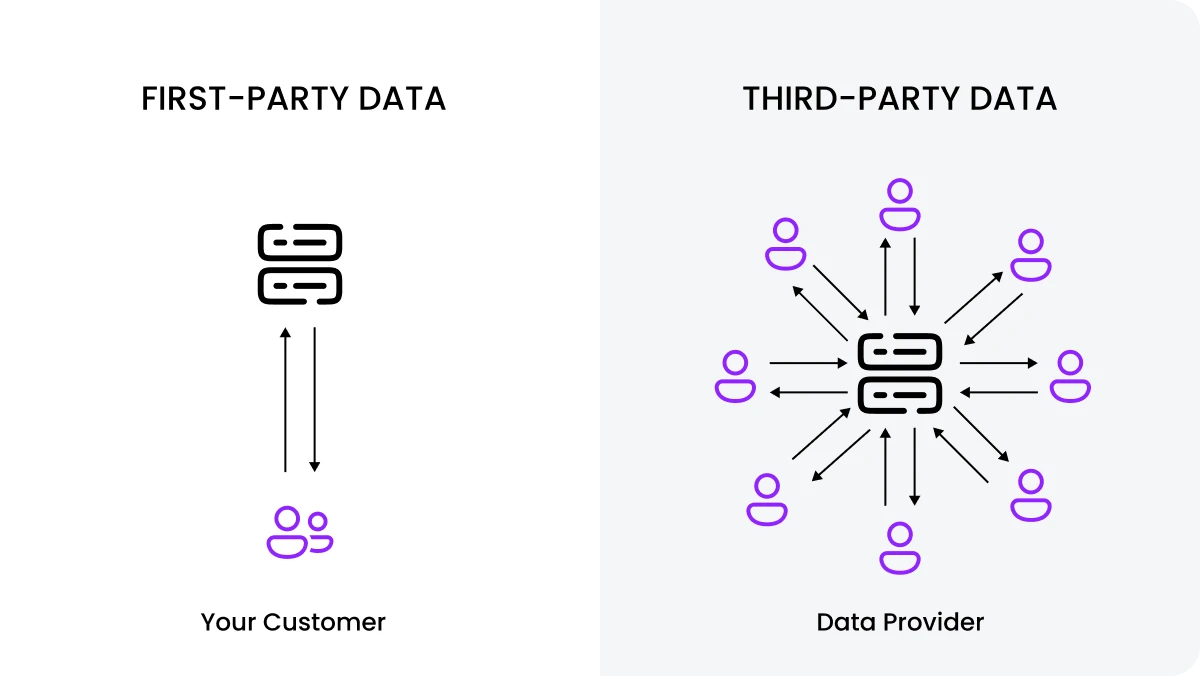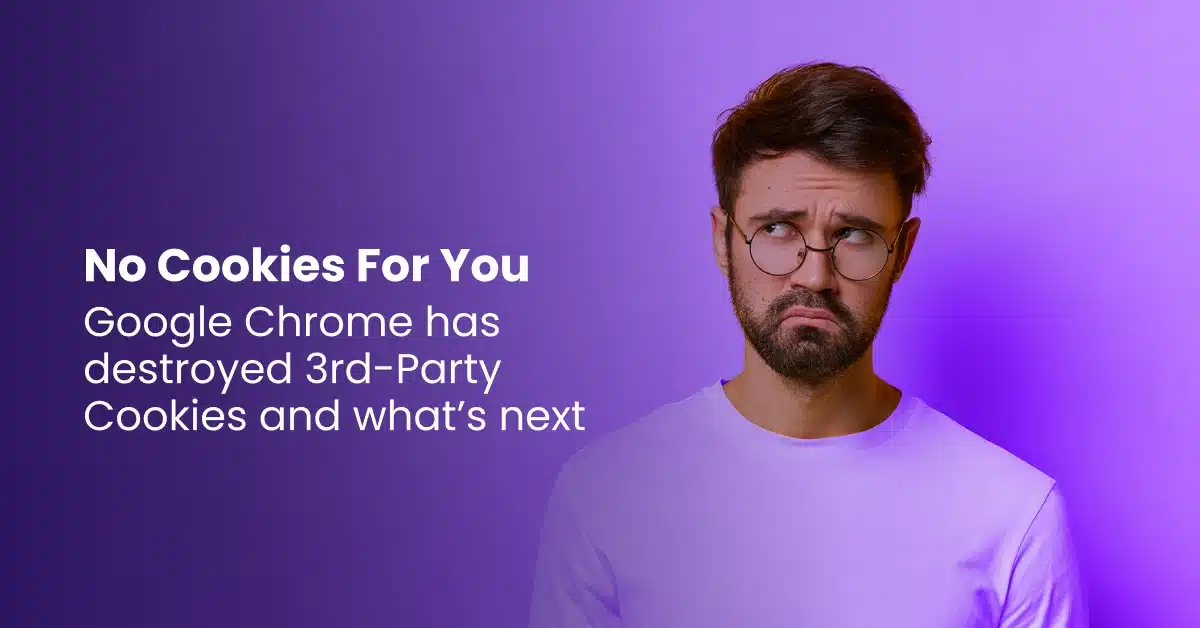Google Chrome, the world’s most popular browser, no longer supports third-party cookies. This change has been in the works for years and arrived in January 2024. The change means publishers and advertisers can no longer rely on third-party cookies.
What Are Third-Party Cookies?
Let’s recap exactly what’s changing this year so that you can put this change into context. Third-party cookies have been popular because they make it easier to track individual users across the Internet. For example, a brand can see that a person visited three different basketball websites, so promoting a basketball product to them is worth the effort. In addition, third-party cookies also make it simple for brands to advertise products to customers after they view them.
How Apple and Google Ended The 3rd Party Cookies
Third-party cookies have driven significant revenues, but that approach will no longer produce significant returns. Why? Apple blocked third-party cookies for all users in 2020. That’s important because Apple’s Safari browser is the world’s second most popular web browser.
As of Jan 4, 2024, third-party cookies will be blocked for 99% of Chrome users. By the end of 2024, Google plans to eliminate support for third-party cookies entirely.
As a result, over 80% of all web users will no longer have access to third-party cookies by the end of the year. It’s likely that the remaining significant browsers – Edge, Firefox, and Opera – will end support over time to remain competitive.
Combining business strategy and regulatory requirements drives the drive to eliminate third-party cookies. Since 2021, Apple’s privacy commitment has led to multiple technical changes that protect user privacy. Google’s 2024 elimination of third-party cookies makes it competitive with Apple from a privacy perspective.
Two critical regulatory changes also drive the drive to enhance privacy changes. Implementing the General Data Protection Regulation (GDPR) in Europe has changed online marketing. Publishers, advertisers, and other organizations must comply or face the consequences. In 2023, Meta Platforms was fined €1.2 billion ($1.3 billion US) for non-compliance. In addition, Amazon, Google, British Airways, and Vodafone have all been fined for non-compliance.
In California, the California Consumer Privacy Act (CCPA) of 2018 has increased expectations for privacy protections. Coming into effect in 2020, the law applies to many companies, including publishers. The California government has found that multiple industries, including retailers, fitness companies, medical devices, and healthcare, have failed to follow the law. California is the largest state by population – 39 million or 11.7% of the US – so the state’s policy has far-reaching impacts on customer expectations.
If you don’t adapt to the new world, you’ll lose advertiser interest, audience trust, and critical audience insights.
How To Adapt and Thrive Without Third-Party Cookies

The end of third-party cookies means the 2010s approach to online advertising has to change. A vital part of the solution lies in developing a first-party relationship. First-party data means that your website directly connects with an end user. By gathering first-party data on your audience, you’ll be able to understand your audience preferences better.
Want a deep dive into first-party data? Check out our post: What is First-Party Data?
The more first-party data you gather from your audience, the more you can grow revenue as a publisher. First, rich first-party data makes a publisher more valuable to advertisers because you can improve targeting and relevance. Second, robust first-party data helps publishers understand their audience better, making it easier to sell subscriptions and develop editorial content.
Two Ways To Get More Third-Party Data From Your Audience
There are two methods of obtaining more first-party data from your audience: technical and marketing. Both approaches have their merits.
The technical approach is focused on ensuring that you gather consent. It’s very popular – just look at how many websites have data privacy popups! These prompts ask the end user to consent to share data with you. It is a foundational practice to gather first-party data.
While it is a good starting point, asking for permission isn’t enough to engage audiences. Consumers are becoming more and more sensitive about sharing information. To earn their trust, it is crucial to make it worthwhile for end users to give consent. That’s where the marketing approach comes into play.
The marketing approach to first-party data recognizes that publishers and brands are asking for something valuable – consumer data. To earn that value, consumers need to be reassured that they will receive something valuable in exchange for their data.
So, what exactly can you offer your audience to convince them to provide consent and data? After all, first-party data only becomes valuable when you gather data over a prolonged period of time. Earning trust and engagement from your audience depends on their current relationship with a publisher. For simplicity, consider your audience into two categories: logged-in users and paid subscribers.
Appealing To Logged Users
Anonymous website users provide very little first-party data. You’ll find basic analytics data like pages visited and browsers used. This kind of data is minimal. One of the best ways to get better first-party data is to encourage users to create a free user account and log in to your website.
Reserving some content and experiences for logged-in users alone is one of the simplest ways to encourage users to log in. At the end of this post, you’ll get a few ideas to make logging in as a registered user more compelling to your audience.
Keeping Paid Subscribers Engaged
Your paying subscribers tend to trust your brand the most. By definition, you have much richer data on these users because they have paid for access. However, a one-time purchase generates little first-party data.
The solution is to give your paying subscribers reasons to log into your website regularly. Offering special events and guest columnists are some of the ways you can keep your paying subscribers engaged.
What if you are already doing everything you can to keep subscribers excited and not seeing the results you want? You just need to offer a fresh experience to your subscribers, and that’s where Arena can help.
How Arena Helps Publishers Succeed Without Third-Party Cookies
When you offer a compelling live experience on your website, gathering first-party data from your audience gets easy. Picture this: your top sports columnists offer live conversations during March Madness, the Super Bowl, and other events. Your audience will eagerly look forward to participating in those events!
Arena makes it fast and easy to create online experiences. You can install Arena Live Chat in minutes and set up a live chat session. Invite your columnists (or special guests!) to start the conversation, and your audience will get involved. A live chat experience keeps your audience engaged on your website for longer, making it easier to gather first-party data.
Keeping your audience engaged on your website means you will gather a steady stream of first-party data and deepen your relationship with your audience. Keep up these efforts, and you’ll hardly notice the end of third-party cookies. Instead, you’ll have rich first-party data to excite advertisers and better connect with your audience.



